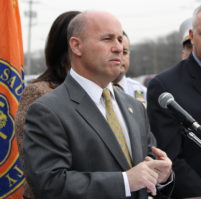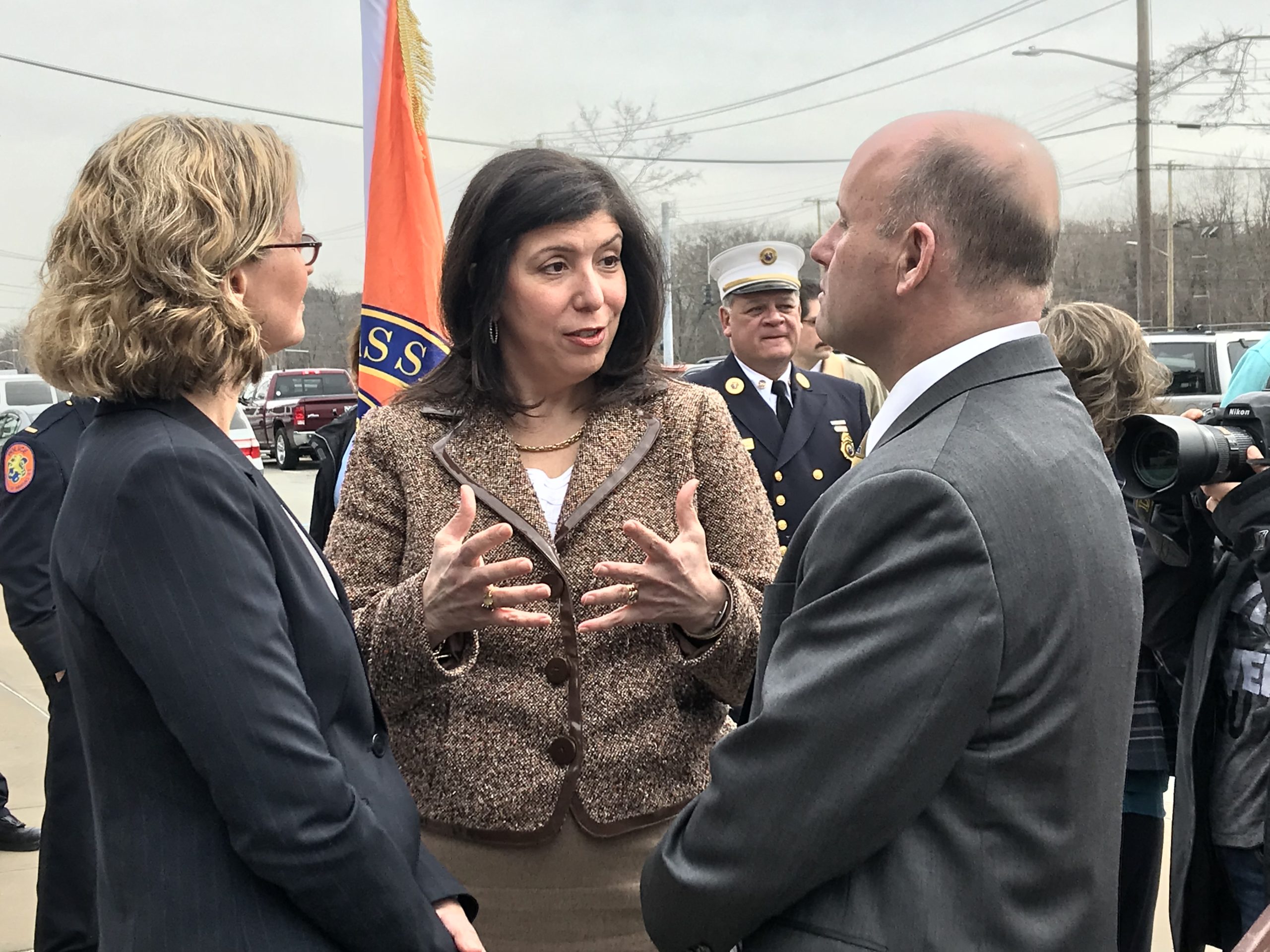Nassau County Executive Laura Curran, Nassau County District Attorney Madeline Singas and Nassau County Police Commissioner Patrick Ryder each said the same phrase about the growing opioid epidemic in the county: “We can’t arrest ourselves out of this opioid crisis.”
The trio of county leaders discussed tactics at a Massapequa press conference Thursday to help pinpoint areas of need in Nassau as well as ways to help addicts instead of filling jails with drug users.

“We have to give people treatment,” Singas said. “We have to give them options. They have to have the tools they need so they can beat this addiction. Once we can curb the demand for the drugs, we can start to turn a corner.”
Ryder said the county’s new ODMAP gives them real-time information about where the overdoses are occurring in Nassau County.
The map also showed locations for reported car burglaries, which Ryder said shows a pattern of addicts breaking into cars for small amounts of cash or items to sell for cash because “heroin is cheap,” he said.
Nassau County Assistant Chief Fire Marshal John Priest, who lost his son Rob in April of 2012 to an opioid overdose, said he puts a face to the statistics of all the families and friends who have lost loved ones to the crisis.

“We missed a lot of the warning signs, and it took a long time to let ourselves off the hook for missing those signs,” Priest said. “We found out our son was a drug addict when he was on a ventilator. We confirmed he was a drug addict when he was dead.”
Priest said while his son’s friends knew he was on drugs, the rest of the world did not, and the friends protected him so no one got in trouble.
“It doesn’t matter if you go to work in a uniform and a badge or if you go to work in a suit and a tie or jeans and a hardhat, this epidemic crosses all lines,” Priest said. “It crosses economic lines. It crosses racial lines. It crosses neighborhood lines. Everyone, unfortunately, is at risk. You cannot say it’s not going to happen in my neighborhood. I’m here to tell you it can.”
Singas said the ODMAP technology, which was paid for by The High Intensity Drug Trafficking Area program, will tell police where to flood their resources both for arrests and for help.
Singas said her office has been working with a number of drug offenders through diversion court, which gives addict the option of treatment before prosecution. Ryder was clear, however, that dealers were not given the same consideration.

“It’s important that when we bring someone into the system that they get to the proper place,” Ryder said. “You’re a drug dealer, you go to jail. You’re a drug user, you can go to diversion court and get the resources and help that you need.”
Long Island officials are projecting about 400 deaths in Suffolk County and 195 in Nassau County last year from heroin and other opiate overdoses.
Nassau Family and Children’s Association President Jeffrey Reynolds said while the ODMAP is helpful for pinpointing resources and areas of need, there is no map for those who found treatment in 2017.
“When someone finds a path to recovery, we celebrate that in a really quiet way in a church basement,” Reynolds said. “We don’t have any maps for mapping recover, and as we think about the 600 people who lost their lives last year, there are thousands who found their way to treatment, who found a path to recovery and have gone about their lives.”



